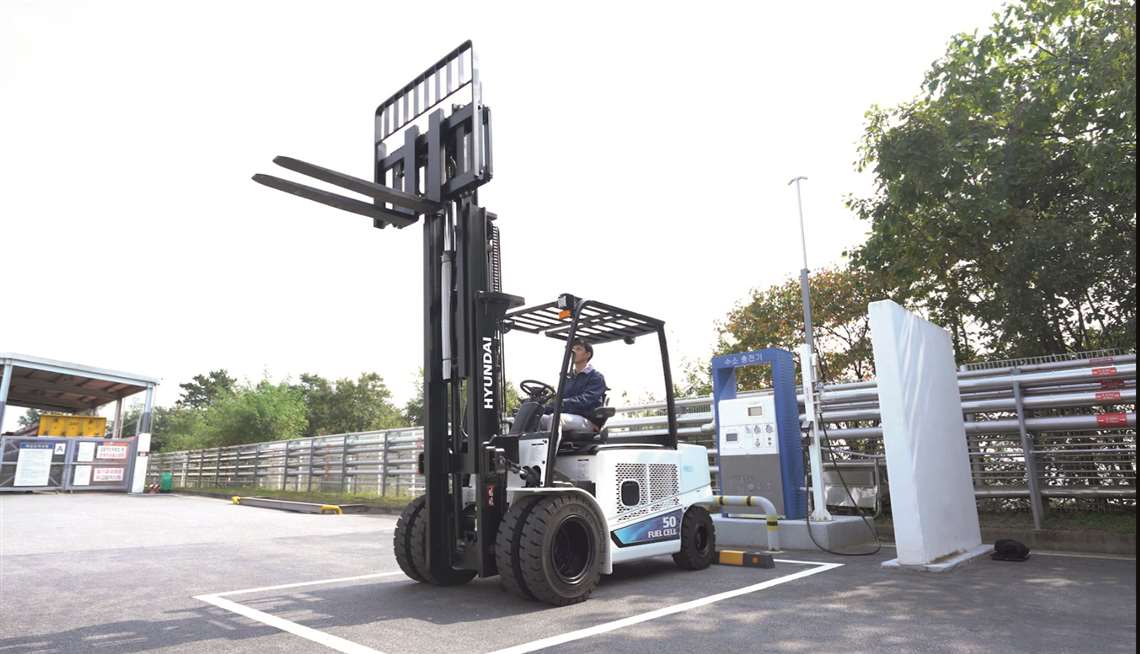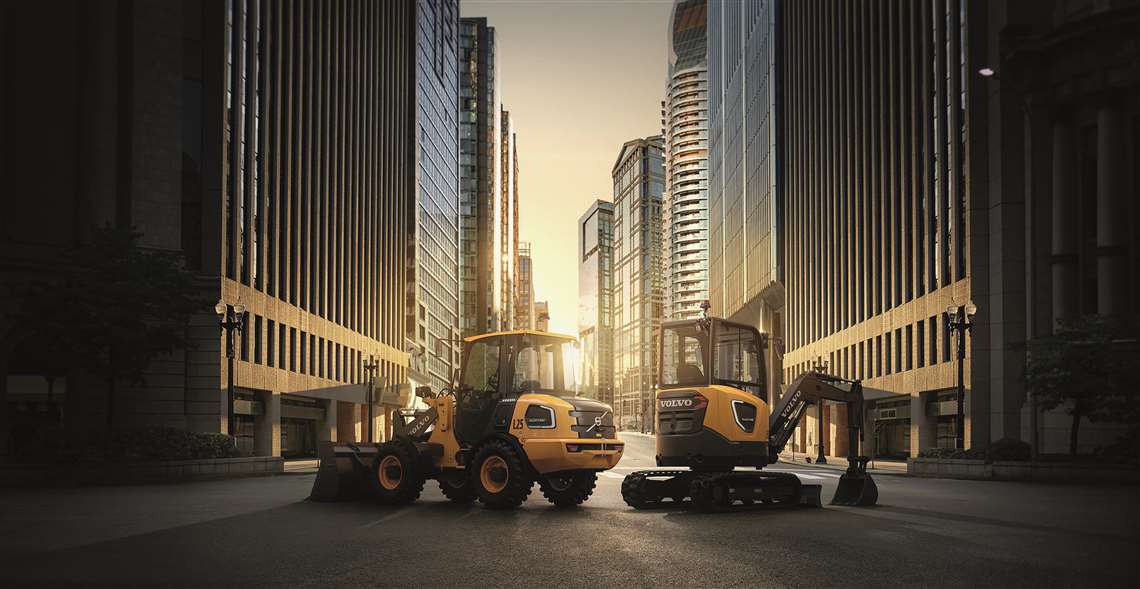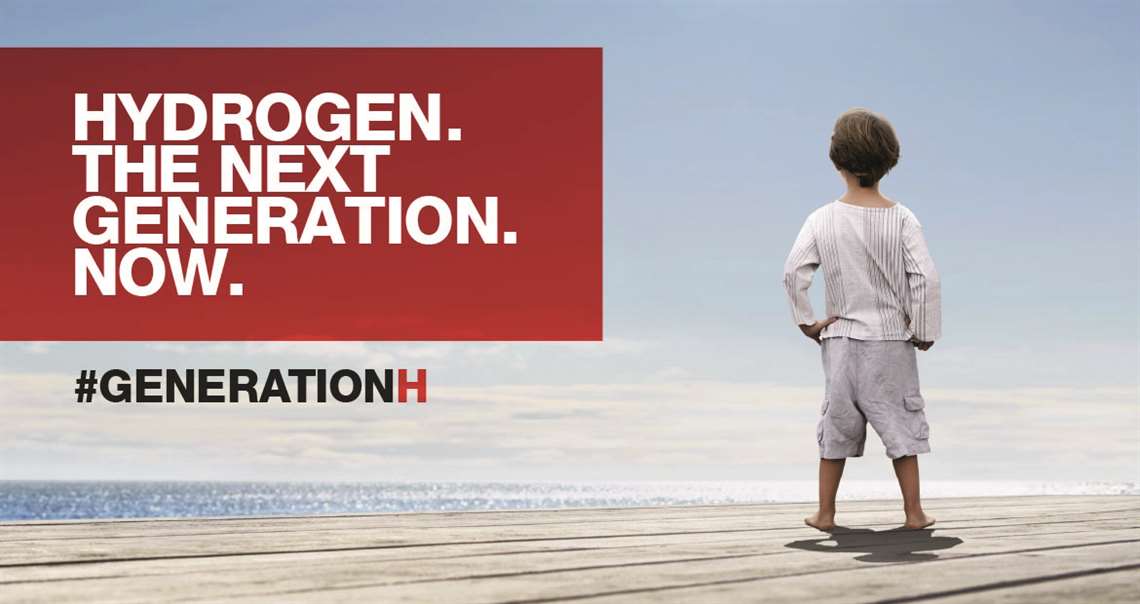Construction’s alternative fuel choices
15 March 2021
The use of alternative sources of fuel and power within the construction industry is increasingly established and, in some cases such as hydrogen, is growing at pace.
As governments step up their drives to decarbonise their environments and economies many OMEs (Original Equipment Manufacturers) are making fuel breakthroughs with their new machinery and, in many cases, switching their focus from diesel to, for example, methane, ethanol, lithium batteries and, particularly, hydrogen.
At least two companies have already recently taken the plunge by progressing with their hydrogen-powered construction equipment – Hyundai Construction Equipment (Hyundai CE) and JCB.
Last year Hyundai Construction Equipment linked up with Hyundai Motor Group to develop hydrogen-powered construction equipment. Hyundai CE signed a Memorandum of Understanding (MOU) regarding the joint-development of hydrogen fuel cell construction equipment with Hyundai Motors and Hyundai Mobis at its Mabuk Research Center in Yongin-si, Gyeonggi-do, South Korea.
Together, the three companies plan to develop hydrogen-powered forklifts and medium/large-capacity hydrogen-powered excavators over the next few years.
According to the MOU, Hyundai Motors and Hyundai Mobis will design and manufacture hydrogen fuel cell systems, including power packs, while Hyundai Construction Equipment will design, manufacture, and evaluate the performance of excavators and forklifts.
The company said that, “given the rapidly rising demand for eco-friendly equipment around the world in recent years,” they expect hydrogen-based construction equipment to help them compete in the global construction market moving forward.
Furthermore, compared to lithium batteries, which have been marred by structural issues limiting various attempts to increase battery capacity, hydrogen fuel cells are much easier to expand, making them a much more logical choice for large forklifts or excavators, it added.
Commercialisation of hydrogen equipment
 A Hyundai hydrogen forklift
A Hyundai hydrogen forklift
Mr Lee Jong-chan, a senior researcher at Hyundai CE, Research & Development, told International Construction that the company’s goal is to develop hydrogen excavators by 2024.
“There is no technical barrier to the 2023 mass production of a hydrogen-powered forklift,” he says. “However, the commercialisation of hydrogen construction equipment should take into account many factors, including hydrogen prices, supply infrastructure and government policies.
“As the Korean government has very aggressive goals and investment plans for hydrogen infrastructure and expansion of hydrogen-fuelled cars – and the supply chain is rapidly developing in Korea due to the expansion of hydrogen-fuelled cars – we expect commercialisation in South Korea to progress quickly.”
He said that hydrogen forklift prototypes are being tested and evaluated and added that it may be possible to use hydrogen to power other Hyundai CE machines “if sufficient business feasibility for hydrogen field is verified, it will be possible to expand it.”
Speaking at the signing of the MOU Hwang Jong-hyun, Head of the Research & Development Division for Hyundai Material Handling at Hyundai Construction Equipment, said, “With this latest agreement, we’ve prepared a foundation upon which we can secure core technology in hydrogen-powered construction equipment ahead of our competitors.”
Hyundai CE said it has continued to focus on developing “eco-friendly” construction equipment and machinery in recent years. It said it mass-produced the first reel-type electric excavator (wired-type equipment used with its power cable plugged in) in 2010, and in 2018, developed a small electric excavator equipped with a large capacity battery for the first time in Korea.
Elsewhere, JCB has developed what it said is the construction industry’s first hydrogen-powered excavator.
The 20-tonne 220X excavator, powered by a hydrogen fuel cell, has been undergoing testing at JCB’s quarry proving grounds. According to JCB the development means they are the first construction equipment company in the world to unveil a working prototype of an excavator powered by hydrogen.
JCB confirmed to International Construction that it does plan to eventually make the hydrogen-powered excavator commercially available but there is no date set yet for this. Asked if JCB has any plans to introduce hydrogen power to any of its other machines the company added, “We are the first construction equipment company in the world to unveil a working prototype of an excavator powered by hydrogen. At the moment that’s what our plans are focused on.”
Ethanol power in construction equipment
 Volvo CE is investing heavily in electric compact equipment
Volvo CE is investing heavily in electric compact equipment
The use of ethanol has frequently been suggested as a suitable contender to replace diesel in some industrial markets.
Now US company ClearFlame Engine Technologies has said it has matched the torque and power of a commercial diesel engine using ethanol, a renewable biofuel, in place of diesel fuel, delivering more than 500 horsepower and over 1,850 foot-pounds of torque while eliminating the need for additional aftertreatment such as selective catalytic reduction or diesel particulate filter systems.
ClearFlame achieved these results on a Cummins X15, a 500hp 15L heavy-duty engine using the company’s high-temperature stochiometric combustion process, which, the company said, leverages higher temperatures to achieve true diesel-style combustion of any decarbonised fuel.
Temperatures are achieved by optimising existing engine thermodynamics and adding insulation on key engine components. The fuel injection system is also engineered to accommodate decarbonised fuels such as ethanol, said ClearFlame.
Dr. Julie Blumreiter, chief technology officer and co-founder of ClearFlame, said, “Achieving these key targets without the use of complex aftertreatment systems helps diesel engine manufacturers to preserve their core engine technology requirements, driving a cost-effective, rapid-to-market solution that addresses evolving emissions regulations.”
 Mr Lee Jong-chan, Hyundai CE
Mr Lee Jong-chan, Hyundai CE
ClearFlame claimed its engine technology enables low-carbon and carbon-negative fuels to be integrated into existing diesel engine platforms, offering a more sustainable and cost-effective solution than diesel fuel.
According to the company it provides the same performance, efficiency, and practicality associated with diesel engines, while eliminating the need for costly aftertreatment solutions. By replacing 100% of the petroleum fuel used with decarbonised fuels such as ethanol, ClearFlame’s engine technology significantly reduces greenhouse gas emissions, particulate matter and smog, helping to meet stringent emissions regulations while reducing overall engine cost, the company claimed.
Diesel engines are cleaner and more efficient than at any time in their long history and aren’t going anywhere for a while. However, the number – and viability – of alternative fuels is growing and will surely continue to do so.

Cummins aims for hydrogen growth Underlining its enthusiasm for developing hydrogen strategies, late last year engine-maker Cummins held a virtual event devoted to the subject with an audience of more than 3,000 analysts, media representatives and other groups. Headed by Cummins’ chairman and chief executive officer Tom Linebarger the company held its Hydrogen Day to outline how it will address production of the low carbon source and also the fuel cell technology to convert it into power for business. However, Linebarger injected some caution into the proceedings saying that carbon neutrality can’t be achieved without private investment and government support. The company said that Germany, for example, plans to spend US$9 billion on hydrogen infrastructure this decade, with five gigawatts of electrolyzer capacity by 2030. China and South Korea are developing fuel cell and hydrogen production targets. California expects to have spent about US$230 million on hydrogen projects by the end of 2023, Cummins added. Cummins said it has the technical expertise and the manufacturing and customer support capabilities to bring to market a range of hydrogen-related products at a scale for widespread adoption. It is already producing a range of electrolyzers to generate ‘green’ hydrogen, including a nearly complete 20-megawatt electrolyzer system in Bécancour, Canada. |
STAY CONNECTED



Receive the information you need when you need it through our world-leading magazines, newsletters and daily briefings.
CONNECT WITH THE TEAM







